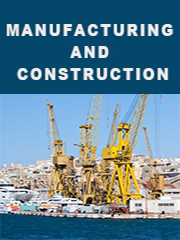Report overview
Resistance welding is a welding technology widely used in manufacturing industry for joining metal sheets and components. The weld is made by conducting a strong current through the metal combination to heat up and finally melt the metals at localized point(s) predetermined by the design of the electrodes and/or the work pieces to be welded. A force is always applied before, during and after the application of current to confine the contact area at the weld interfaces and, in some applications, to forge the work pieces.
This report aims to provide a comprehensive presentation of the global market for Resistance Welding Machine, with both quantitative and qualitative analysis, to help readers develop business/growth strategies, assess the market competitive situation, analyze their position in the current marketplace, and make informed business decisions regarding Resistance Welding Machine. This report contains market size and forecasts of Resistance Welding Machine in global, including the following market information:
Global Resistance Welding Machine Market Revenue, 2018-2023, 2024-2029, ($ millions)
Global Resistance Welding Machine Market Sales, 2018-2023, 2024-2029, (Units)
Global top five Resistance Welding Machine companies in 2022 (%)
The global Resistance Welding Machine market was valued at US$ 1037.2 million in 2022 and is projected to reach US$ 1340.5 million by 2029, at a CAGR of 3.7% during the forecast period. The influence of COVID-19 and the Russia-Ukraine War were considered while estimating market sizes.
Global Resistance Welding Machine key players include ARO Technologies, Fronius International, Nippon Avionics, etc. Global top three manufacturers hold a share over 20%.
Europe is the largest market, with a share about 25%, followed by China, and North America, both have a share over 40 percent.
In terms of product, Semi - Automatic Resistance Welding Machine is the largest segment, with a share over 45%. And in terms of application, the largest application is Automobile Industrial, followed by Domestic Appliances Industrial, Aircraft Construction, etc.
We surveyed the Resistance Welding Machine manufacturers, suppliers, distributors and industry experts on this industry, involving the sales, revenue, demand, price change, product type, recent development and plan, industry trends, drivers, challenges, obstacles, and potential risks.
Total Market by Segment:
Global Resistance Welding Machine Market, by Type, 2018-2023, 2024-2029 ($ Millions) & (Units)
Global Resistance Welding Machine Market Segment Percentages, by Type, 2022 (%)
Manual Resistance Welding Machine
Semi - Automatic Resistance Welding Machine
Automatic Resistance Welding Machine
Global Resistance Welding Machine Market, by Application, 2018-2023, 2024-2029 ($ Millions) & (Units)
Global Resistance Welding Machine Market Segment Percentages, by Application, 2022 (%)
Automobile Industrial
Domestic Appliances Industrial
Aircraft Construction
Other Application
Global Resistance Welding Machine Market, By Region and Country, 2018-2023, 2024-2029 ($ Millions) & (Units)
Global Resistance Welding Machine Market Segment Percentages, By Region and Country, 2022 (%)
North America
US
Canada
Mexico
Europe
Germany
France
U.K.
Italy
Russia
Nordic Countries
Benelux
Rest of Europe
Asia
China
Japan
South Korea
Southeast Asia
India
Rest of Asia
South America
Brazil
Argentina
Rest of South America
Middle East & Africa
Turkey
Israel
Saudi Arabia
UAE
Rest of Middle East & Africa
Competitor Analysis
The report also provides analysis of leading market participants including:
Key companies Resistance Welding Machine revenues in global market, 2018-2023 (Estimated), ($ millions)
Key companies Resistance Welding Machine revenues share in global market, 2022 (%)
Key companies Resistance Welding Machine sales in global market, 2018-2023 (Estimated), (Units)
Key companies Resistance Welding Machine sales share in global market, 2022 (%)
Further, the report presents profiles of competitors in the market, key players include:
ARO Technologies
Fronius International
NIMAK
Nippon Avionics
Daihen Corporation
T. J. Snow
Panasonic Welding Systems
CenterLine
TECNA
Taylor-Winfield
Heron
CEA
Guangzhou LN
Shenzhen Juntengfa
Guangzhou Zongbang
PW Resistance Welding Products
Chengdu Zhengyang
Outline of Major Chapters:
Chapter 1: Introduces the definition of Resistance Welding Machine, market overview.
Chapter 2: Global Resistance Welding Machine market size in revenue and volume.
Chapter 3: Detailed analysis of Resistance Welding Machine manufacturers competitive landscape, price, sales and revenue market share, latest development plan, merger, and acquisition information, etc.
Chapter 4: Provides the analysis of various market segments by type, covering the market size and development potential of each market segment, to help readers find the blue ocean market in different market segments.
Chapter 5: Provides the analysis of various market segments by application, covering the market size and development potential of each market segment, to help readers find the blue ocean market in different downstream markets.
Chapter 6: Sales of Resistance Welding Machine in regional level and country level. It provides a quantitative analysis of the market size and development potential of each region and its main countries and introduces the market development, future development prospects, market space of each country in the world.
Chapter 7: Provides profiles of key players, introducing the basic situation of the main companies in the market in detail, including product sales, revenue, price, gross margin, product introduction, recent development, etc.
Chapter 8: Global Resistance Welding Machine capacity by region & country.
Chapter 9: Introduces the market dynamics, latest developments of the market, the driving factors and restrictive factors of the market, the challenges and risks faced by manufacturers in the industry, and the analysis of relevant policies in the industry.
Chapter 10: Analysis of industrial chain, including the upstream and downstream of the industry.
Chapter 11: The main points and conclusions of the report.
